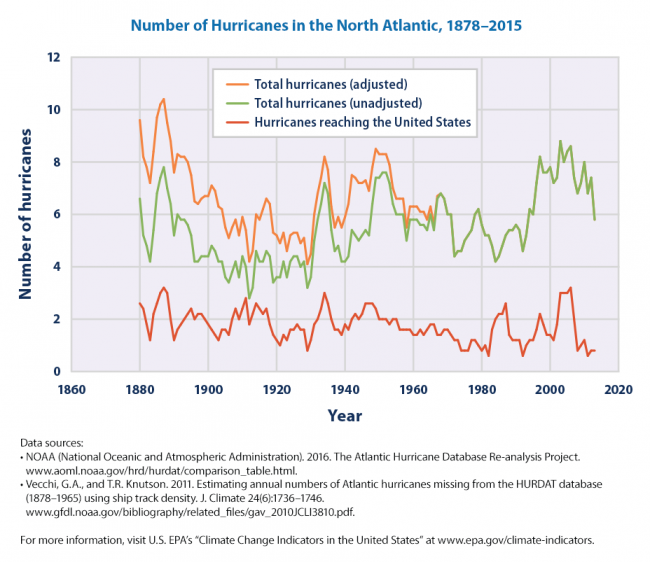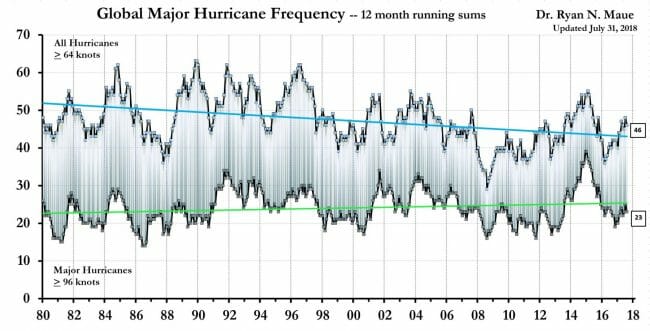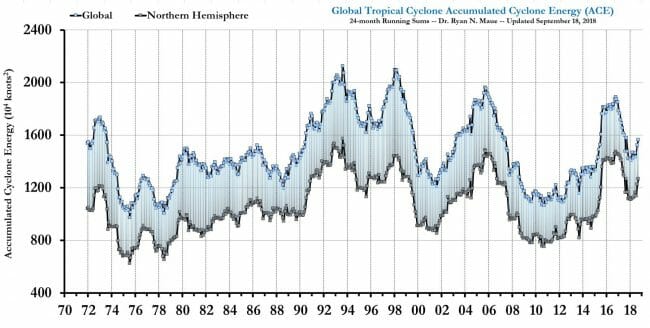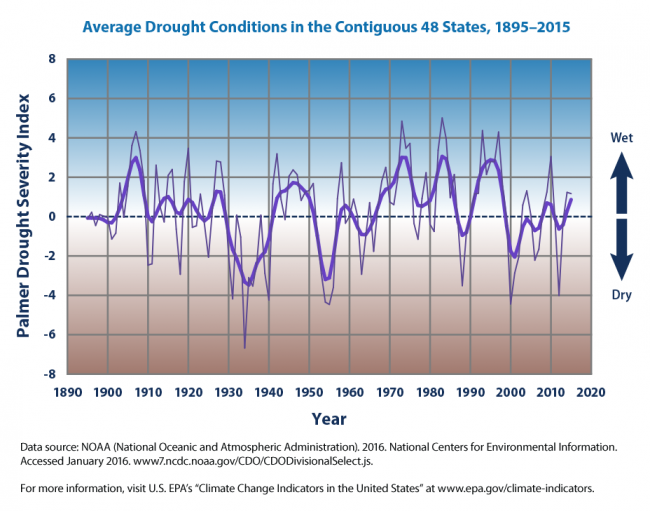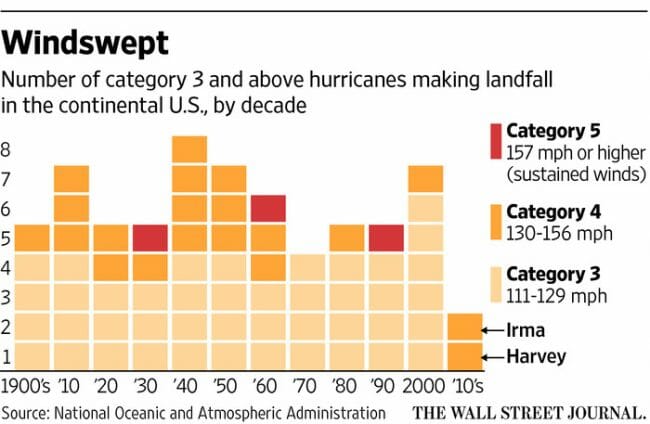A Request To Send Me Graphs of Negative Climate Trends
For years I have been mocking attempts to "prove" negative climate trends from a single data point. Too often a single event (e.g. strong hurricane landfall) is treated as "proof" of a trend, though how anyone who styles themself as "scientific" can claim a trend from a single data point is beyond me. Every time someone claims a trend in, say, hurricane strength or drought or crop yields, I never can see any trend in the actual archived data for those phenomena.
So I am soliciting real medium and long-term trend data that points to some sort of negative climate trend. To save folks time, I know of and have the data for several already:
- Increasing worldwide average temperatures, as measured both on the ground and in the lower troposphere by satellites
- Increasing number of record high nighttime low temperatures (yes, I know, this is always confusing)
- Arctic (but not Antarctic) sea ice extent, at least over the last 50 years
- US heavy rainfall events
- Sea level rise
Note that at this point I do not care if the trend is natural or manmade or if you can really specify a difference (which I would argue you likely cannot). For example the sea level rise trend of 2-3mm a year goes all the way back to before 1850, and thus is hard to ascribe totally to man-made CO2 which has mostly been produced in the latter half of the 20th century.
Here are some rules:
- Must have a link to original data source or at least the original chart source (some groups are terrible about archiving the actual data), which can be a study or a group that actively measures the phenomenon.
- It can't just be for a limited geography. North Carolina is too small. The Antarctic Peninsula is too small. The US is really too small but I will accept it because the US temperature data is some of the most complete in the world. But don't send me a limited geography when the same data is available for a larger geography (ie only hurricanes in the Indian Ocean when we have hurricane data for the whole globe).
- It needs to be for as long of a time period as possible, and if you cut off early or late data there has to be a reason. large changes in measurement approach can be a valid reason for leaving out data -- for example, small tornadoes before the advent of doppler radar and moder tornado tracking are likely undercounted. Ditto hurricanes.
- It can't be based on a model. It has to be actual readings, not model estimates. Have a care on this -- many pieces of historical data that are presented as actual measurements are actually model results.
- It needs to be a weather or climate metric. If you want, you can send me potentially derivative variables and I might present these in another section, but they tend to be suspect because the causality extends beyond climate. An example of this is forest fire acreage burned, which can relate to climate but also can relate to forest management, forest health and insect threats, and firefighting philosophy as well. Other similar metrics include crop yields, disease rates, refugees, wars, and a zillion other things that get attributed in some study to climate change.
Anything that passes these rules will get posted, though I reserve the right to comment.
Update: Comments section is OK, but email is better. Click the contact link up at the top.
